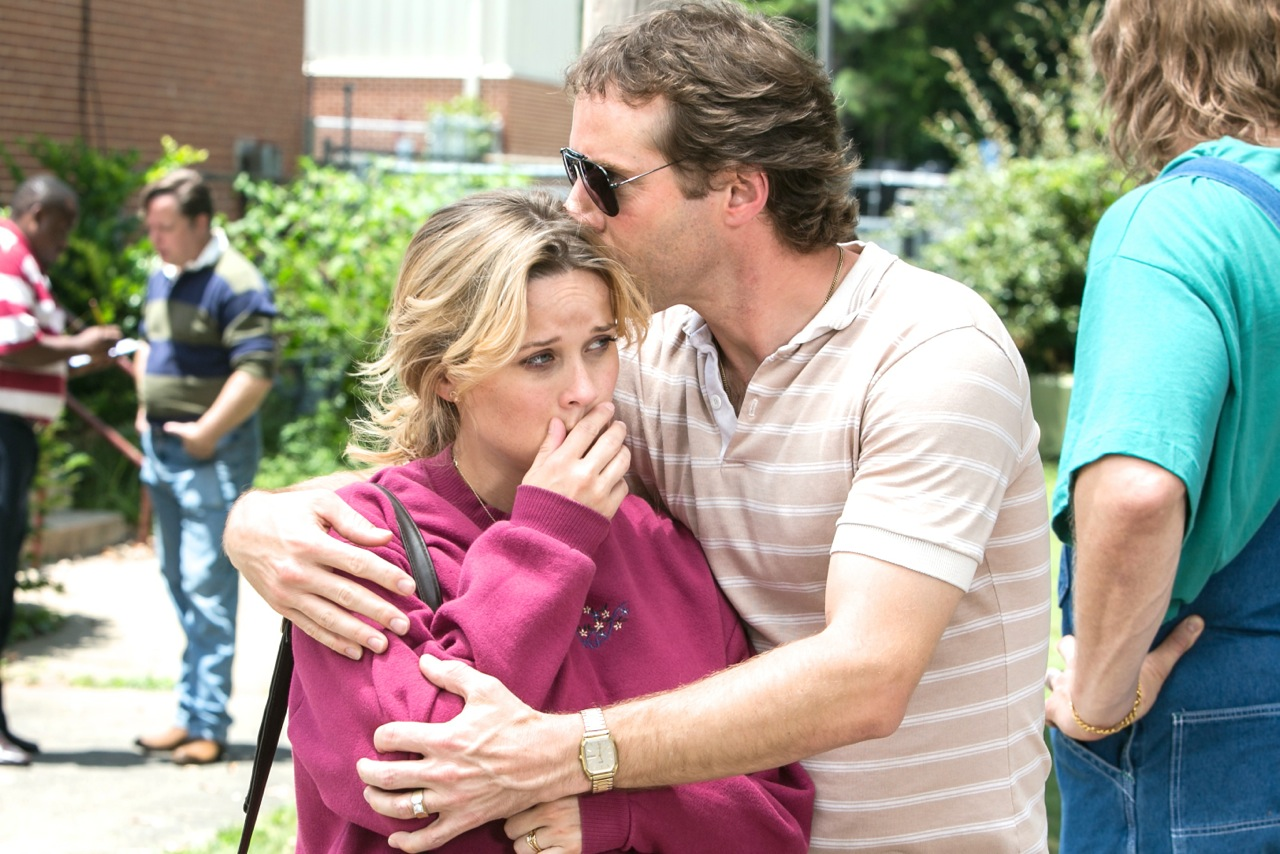Up until this year’s release of Atom Egoyan’s Devil’s Knot, the unsolved case of the West Memphis Three—the subject of several documentaries and intense media attention—had never been fictionalized on screen. Written by Scott Derrickson and Paul Harris Boardman, and based on Mara Leveritt’s true-crime book Devil’s Knot: The True Story of the West Memphis Three, the film covers the grisly murder of three young West Memphis boys, its subsequent investigation, and the controversial trial and conviction of the teenaged Damien Echols, Jessie Misskelley Jr., and Jason Baldwin. A long 17 years after the trial, the West Memphis Three were finally released with an Alford plea agreement, and it’s peculiar that it took even longer for the beguiling case to be fictionalized, given the countless contradictions, theories, and developments it proffered the popular imagination. The trial’s timing makes the void even stranger: True crime had a ubiquitous presence in the early to mid 1990s, enveloping popular culture in headlines and on cable television shows like America’s Most Wanted and Unsolved Mysteries. The mix of real footage and dramatized segments of that latter series helped to define a hackneyed genre of its own, the true-crime melodrama TV thriller, with its own language of clichés.
Devil’s Knot operates within that now-outdated language, looking and feeling like it belongs on cable television in the era before high definition, with muted, lifeless colors that seem less intentional than simply the result of careless cinematography. The visual aesthetic decisions only underscore the film’s most problematic quality: an incredulous, self-righteous approach to the trial that, at best, serves as an unnecessary echo, and at worst, dilutes the potential for worthy discourse surrounding the aftermath of the trial and its relevance in the contemporary American legal system. Unfolding plainly as a perfunctory procedural-cum-courtroom drama, Devil’s Knottells the highly publicized story as if for the first time, inviting the audience to be appalled all over again, and failing to ask compelling questions that would merit the relevance of a fictional film about the subject in 2013. Because there are so many inconsistencies and loose threads in the West Memphis Three case, the film selects the most requisite details, like the mysterious, disappeared Bojangles’ restaurant man, the dubious, inconsistent testimonies from Vicki Hutcheson and her son, Aaron, and various police investigation screw-ups. In order to condense the material for a standard-length feature, and devote the necessary time to play out the damning courtroom portion, the film omits or plays down notable developments like the involvement of John Mark Byers, the stepfather of one of the murdered children, Damien’s upbringing and mental health history, and the town’s collective anxiety over Satanic rituals.
Given that the West Memphis Three case involved a wide network of people, the scriptwriters chose leads from the book who could serve as relatable protagonists. Instead of focusing on the convicted teens, the most important and misunderstood people in the case, Devil’s Knot spends the bulk of its time with two people whose straightforward backgrounds and motives make them much more palatable for a mainstream audience: Ron Lax (Colin Firth) is the behind-the-scenes defense strategist who works on the case pro-bono, and Pam Hobbs (Reese Witherspoon) is the openly religious mother of one of the murdered boys, Stevie. Lax and Hobbs are closely connected to the case, but not to each other, though they exchange disturbed glances occasionally during the highly charged moments in the trial—an easy way for the film to establish that there were still involved townspeople who resisted believing the misleading accusations against the teens.
With Firth’s warm, understanding eyes and his calm, rational demeanor, the film fleshes out Lax as the typical white-male hero, a virtuous civil-rights defender with a quaint hobby for buying antiques and who’s undergoing a painful divorce. His curiosity about the suspects and their possible innocence, the ethical quandaries he raises with law-enforcement officials, and his reactions to every unfair development in the court mimics the viewer’s own cognitive processing and emotional responses. Lax isn’t one-dimensional, but ultimately the expansive time devoted to his character development has an explicit, singular purpose, and that’s to establish him as the viewer’s gateway in experiencing the appropriate reaction at every juncture. In separate scenes, both the attractive waitress who dotes on him and his ex-wife remind him that, in spite of what happens, he’s a good man doing the right thing, even if the town is against him. Hobbs’s function complements Lax’s as another gateway into understanding the trial, and in this respect the film exposes a strangely gendered representation of its characters. Where Lax signifies the masculine voice of reason, Hobbs’s role communicates the emotional breakdown after losing a child, and her helplessness is unmistakably linked to her gender. One couldn’t find more accurate and problematic terms to describe her scenes than “hysterical” and “female intuition.” In surreal dream-like sequences (one of the few times Egoyan reminds us the film is his), she sees her husband brandishing the boy’s pocket knife, and later finds the knife in the man’s toolbox. Hobbs comes to believe he may be involved in the murders, and by the film’s end, she’s left him based on her gut feeling, without further evidence.
The film concludes some time after the verdict, where a restless Lax finds Hobbs brooding at the crime scene late at night. Perplexed by the results of the trial, she outlines the checklist of contradictory facts the film has already spent its entire run time disbursing. Lax has no satisfying response, of course—and years later, there are still scarce answers. The film asks why the case happened, when perhaps, given the degree of collective perspective gained this many years later, the film could have been more useful in taking a phenomenological approach, exploring howa kind of moral panic evolved, allowing West Memphis townspeople to more likely believe the baseless accusations against so-deemed Satanic worshipers.

